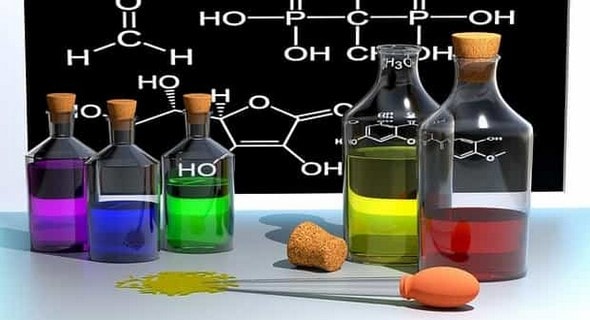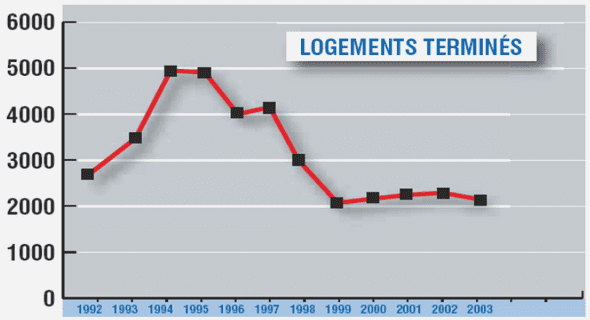Chemical constituents from stems and leaves of Diospyros gracilipes Hiern and the antimicrobial and cytotoxic principles
The ethanolic extract from stems and leaves of Diospyros gracilipes Hiern showed moderate antimicrobial activity against Staphylococcus aureus (9 mm), Klebsiella pneumonia (7 mm) and Candida albicans (11 mm) using the disc diffusion assay. Fractionation of the extract led to the isolation of lupenone, ursolic acid, corosolic acid, a mixture of 3α- and 3β- taraxerols, 3β-E-coumaroyltaraxerol, pinocembrin, scopoletin, plumbagin and elliptinone as established by spectroscopic techniques. Plumbagin exhibited potent antimicrobial activity against the three test microorganisms with inhibitory zones ranging between 30 and 43 mm at 50 µg/disc, and 21 and 28 mm at 10 µg/disc. Plumbagin displayed significant cytotoxicity (IC50=0.26 µg/mL) against HT-29 colon cancer cell line in the sulforhodamine B assay, whereas elliptinone showed weaker activity (IC50=13.29 µg/mL) compared to plumbagin. The reported anti-progestational activity of plumbagin provides a rationale for the popular use of this plant as abortifacient. Keywords: Diospyros gracilipes; Chemical constituents; Antimicrobial activity; Cytotoxicity; Plumbagin; Elliptinone.
Introduction Madagascar is classified as a country of biodiversity hot spot. Its flora consists of approximately 12,000 plant species, of which 80% are endemic. The Malagasy forests host a large number of medicinal plants used by local people to treat a variety of illnesses. This biological richness may constitute a reservoir of natural products of great significance as drugs and lead structures. Diospyros is a large pantropical genus of approximately 500 species in the Ebenaceae family. More than 100 Diospyros species are encountered in Madagascar. Most of them, for example D. gracilipes, D. perrieri and D. platycalyx, commonly known as ebonies are reputed to produce a very good quality of wood which is highly demanded and primarily used in making furniture, music instruments or ornamental articles [1]. Many Diospyros are used worldwide in indigenous health system of medicine to treat various human diseases as enlisted by Khan and Timi [2]. Some species have been chemically and biologically investigated and reported to contain structurally diverse secondary metabolites including triterpenoids, naphthoquinones and polyphenols endowed with antimicrobial, antioxidant and tyrosinase inhibitory activities [3-5]. In the course of our studies on the bioactive principles from endemic plants that are employed in traditional medicine in Madagascar, we examined the constituents of the stems and leaves of Diospyros gracilipes Hiern. It is a tree reaching 15 m in height, found in humid forests in the northern and eastern regions of Madagascar. The barks, leaves and fruits are popularly used to stimulate uterine contractions during childbirth and as abortifacient [1]. There have been no previous reports on the constituents and biological activities of this species. The present work aims at isolating phytochemicals from stems and leaves of D. gracilipes and evaluating their antimicrobial and cytotoxic activities. Materials and Methods Plant material The stems and leaves of D. gracilipes were collected in October 2011 in the Integrale Natural Reserve of Tsaratanana, Commune of Mangindrano in the North of Madagascar. The species was identified by one of us (S.R.) at the Botany and Ethnobotany Department of the National
Center for Applied Pharmaceutical Research, Antananarivo, Madagascar, where a voucher specimen (ST1486) is also deposited. Extraction and isolation The stems and leaves of D. gracilipes (350 g) were powdered and extracted with EtOH at room temperature for 48 hours, resulting in the crude ethanolic extract (11.3 g). A portion (8.5 g) was suspended in 90% aqueous MeOH (200 mL) and extracted with n-hexane (3 x 200 mL). The aqueous MeOH layer was then diluted to 60% aqueous MeOH by addition of water before partitioning with CHCl3 (3 x 200 mL). Evaporation of the solvents in vacuo provided dried n-hexane- soluble (1.7 g), CHCl3-soluble (2.1 g) and MeOH-soluble (4.3 g) fractions. The hexane-soluble fraction was first chromatographed over silica gel column with different solvents of increasing polarity (n-hexane/CH2Cl2 followed by CH2Cl2/MeOH) to yield six fractions (A1-A6). Fractions A1 (429.7 mg) was further fractionated over silica gel column (n-hexane/EtOAc, 100:0→0:100) to yield five sub-fractions (A11-A15). Sub- fractions A12 and A14 were crystallized from MeOH to give a mixture of compounds 4 and 5 (3.6 mg), and compound 6 (2.3 mg), respectively. Fraction A4 was subjected to RP-18 silica gel column (MeOH/H2O, 4:1) as eluent to afford compound 2 (8.3 mg). Purification of fraction A5 (178.6 mg) on Sephadex LH-20 (CHCl3/MeOH, 7:3) furnished compound 8 (1.5 mg). The CHCl3-soluble fraction was loaded on a silica gel column with gradient elution of CH2Cl2/MeOH to give eight fractions (B1-B8). Further separation of fraction B1 (67 mg) by silica gel column chromatography with different mixtures of EtOAc in n-hexane gave six subfractions (B11-B16). Sub-fraction B13 was washed with EtOAc to leave compound 10 (0.4 mg). Fraction B6 (129.1 mg) was further separated on Sephadex LH-20 (CHCl3/MeOH, 7:3) and RP-18 silica gel (MeOH/H2O, 7:3 and 3:2) to afford compound 3 (6.6 mg). Sub-fractions A11 and B11 from the above column chromatography were pooled because they showed almost identical TLC patterns. The combined fraction (total weight 140.7 mg) was purified by silica gel column (n-hexane/EtOAc, 15:1) and RP-18 silica gel column to give compound 1 (1.5 mg) and compound 9 (2.3 mg). Similarly, the combined sub- fractions A13 and B14 (total weight 89.8 mg) were subjected to a silica gel column (n-hexane/EtOAc, 7:1) and RP-18 silica gel column to furnish compound 7 (1.4 mg). Purity of compounds was checked on normal phase silica gel TLC or RP-18 silica gel TLC. TLC plates were developed with suitable eluents. Spots were first visualized under UV light at 254 and 366 nm and then by using the vanillin sulphuric spray reagent. Structural elucidation The chemical background of the genus and the Rf value, fluorescence and color on TLC of the studied compound gave a first idea of the chemical class to which it belongs. Structures were elucidated by means of spectroscopic techniques (1H The microorganisms used in this study consisted of the Gram- positive bacteria Staphylococcus aureus (ATCC 11632), the Gram-negative bacteria Klebsiella pneumoniae (from the stock culture of the Pharmacology Department of the National Center for Applied Pharmaceutical Research, Antananarivo, Madagascar) and the yeast Candida albicans (ATCC 10231). Antimicrobial activity and susceptibility-screening tests were performed using the disc diffusion method. Each microorganism was suspended in Muller-Hinton broth (Difco, Detroit, MI) for the bacteria and Sabouraud broth (Difco, Detroit, MI) for the yeast. They were diluted with peptone water to provide cell counts of the inoculum at 106 CFU/ml. Bacterial strains were then inoculated on Mueller–Hinton agar plates and the yeast in Sabouraud agar, each in triplicate. Sterilized filter paper discs of 6 mm diameter (Biomérieux, Marcy l’Etoile, France) were saturated with 10 μL of the ethanolic extract (100 µg/disc) and the compounds (10 and 50 µg/disc). Soaked discs were then placed on the plates and incubated for 24 h, after which the diameter of the inhibitory zone was measured (mm). Negative controls consisted of the solvents used to dissolve the samples. Each assay was done in triplicate. The results were expressed as the mean value of the inhibition zones. Tetracyclin and miconazole (Bio-Rad, Marnes-la-Coquette, France) were used as positive controls.


